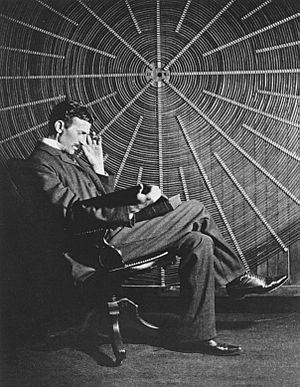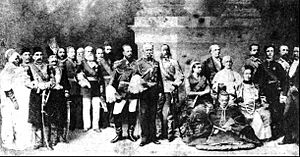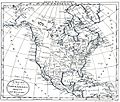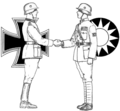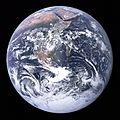Modern history facts for kids
|
|
Modern history is the story of the world after the Middle Ages. It usually starts around the 17th and 18th centuries with big ideas like the Age of Reason and the Age of Enlightenment. It also includes the start of the Industrial Revolution.
This period has seen amazing changes in science, politics, war, and technology. It's also when the world became more connected through globalization. During this time, European countries started to have a big influence on the world's politics, economy, and culture.
Contents
The Early Modern Period (Late 15th to Early 18th Century)
- Further information: 16th century and 17th century
This time is also called the early modern period. It was a time when Europeans explored and found new lands, like the Americas. They also started trading more with countries in Asia, like China.
Some key events that changed the world during this period include:
- The Age of Discovery began with the discovery of the Americas in 1492.
- Johannes Gutenberg invented the movable type printing press in the 1450s. This led to more books and the first newspapers.
- Martin Luther challenged the Church in 1517, starting the Protestant Reformation.
- The defeat of the Spanish Armada in 1588 helped the British Empire grow stronger.
- The Thirty Years' War (1618-1648) in Central Europe caused a huge loss of life.
- The Peace of Westphalia treaties were signed in 1648. These treaties ended several wars and created the idea of independent countries.
- The Treaty of Utrecht changed who ruled the seas, from Spain to Britain.
- Louis XIV, also known as the "Sun King," ruled France for a very long time.
The Industrial Revolution
This period brought huge changes in how things were made. Factories started using new machines to make clothes, weapons, and other tools. This revolution truly began the modern world we live in today.
- Important inventions like the Steam engine (1764) and the Spinning Jenny (1769) changed how goods were produced.
- People started to reject the idea of kings having total power. The Declaration of Independence in 1776, by the British Colonies in America (which became the USA), inspired the French Revolution in 1789.
The Napoleonic Era
The Napoleonic era was a big part of the History of France and Europe. It's seen as the fourth stage of the French Revolution. This era began when Napoleon took power in a coup d'état. It ended in 1815 with his defeat at the Battle of Waterloo.
The 19th Century
The 19th century lasted from 1815 to 1914.
During this time, large empires like the Spanish, Portuguese, Ottoman, and Mughal began to lose their power.
After the Napoleonic Wars, the British Empire became the most powerful in the world. It controlled a quarter of the world's people and a third of its land! The British Empire helped with trade and fought against piracy. This century also saw the invention of the first lightbulb, cars, railways, airplanes, and more.
The 20th Century
The 20th century was a time of huge progress in technology and medicine. These advancements changed how people lived their lives. Some big changes included space exploration, nuclear technology, genetics, and the start of the Information Age.
This century also saw two major global conflicts: World War I and World War II. There was also a terrible flu outbreak called the Spanish Influenza. Many parts of the world also gained their independence during a process called decolonisation.
Related pages
Images for kids
-
John Trumbull's Declaration of Independence, showing the five-man committee in charge of drafting the Declaration in 1776 as it presents its work to the Second Continental Congress in Philadelphia.
-
American westward expansion is shown in Emanuel Leutze's famous painting Westward the Course of Empire Takes its Way (1861).
-
The Blue Marble, a photograph of Earth as seen from Apollo 17. The second half of the 20th century saw more interest in both space exploration and the environmental movement.
-
European trade blocs in the late 1980s. EEC members are blue, EFTA is green, and Comecon is red.
See also
 In Spanish: Edad Moderna para niños
In Spanish: Edad Moderna para niños


